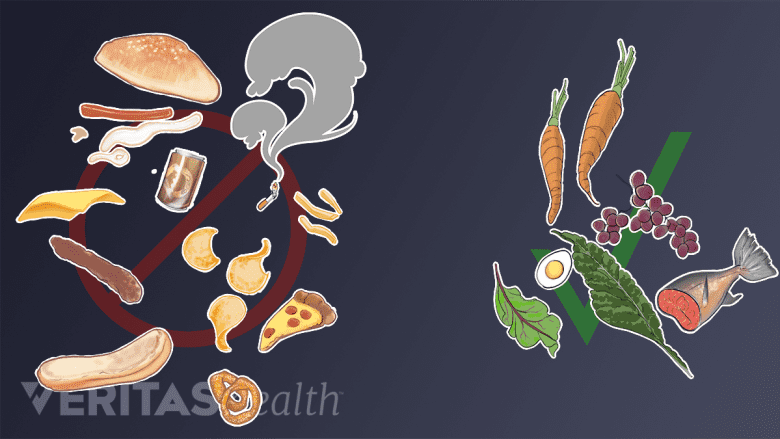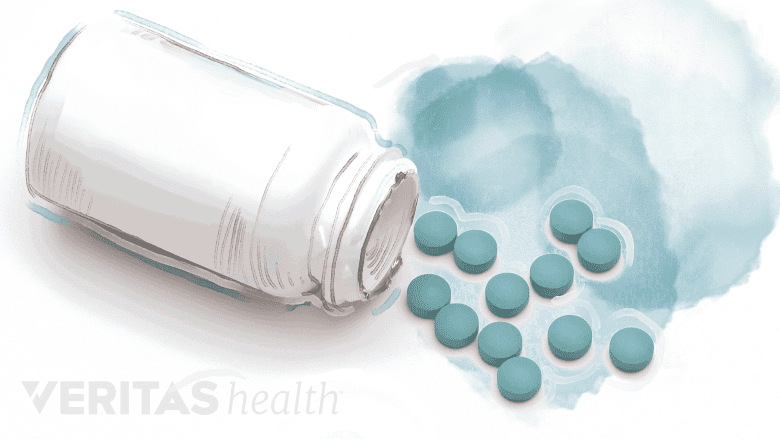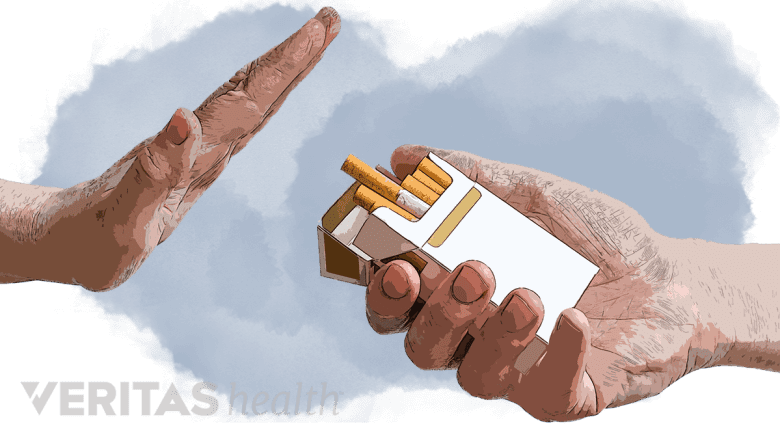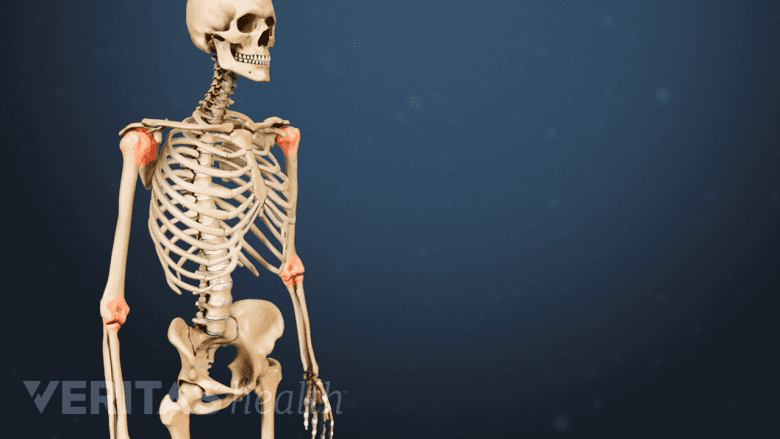Bone density can be increased by prioritizing the consumption of calcium and vitamin-D-rich foods in childhood, engaging in physical activities and exercise, and maintaining a healthy lifestyle. Bones are composed of specialized bone cells woven into a matrix of minerals (mainly calcium) and proteins. When the mineral content is more, the bone density is higher.
Bone density varies in different parts of the body, and high bone density is typically associated with stronger bones, while low bone density may indicate fragile, brittle, or weak bone.
In This Article:
- Calcium Requirements for Kids' Growing Bones
- Calcium-Rich Foods for Kids: A Complete Guide
- How to Increase Bone Density
4 Proven Ways to Increase Bone Mineral Density
The following diet and lifestyle changes can contribute to building healthy bone mass and increasing bone mineral density:
1. Consuming more calcium- and vitamin D-rich foods in childhood
Consuming a calcium-rich, healthy diet helps build and support strong bones.
Calcium is the principal constituent of bone. Consuming adequate amounts of calcium-rich foods in childhood, especially during the pre-pubertal and pubertal years, contributes to increased bone mass, thereby increasing bone density.1Zhu X, Zheng H. Factors influencing peak bone mass gain. Front Med. 2021;15(1):53-69. doi:10.1007/s11684-020-0748-y
Vitamin D helps absorb calcium from food and regulates its level in the blood.1 Obtaining adequate amounts of vitamin D through diet and sunlight exposure can help regulate calcium metabolism and promote healthy bone growth.
A diet that lacks calcium and vitamin D may have adverse effects on the quality and growth of bones and the overall development of the child.
2. Engaging in physical activities
Engaging in physical activity and exercise can help increase bone mass.
Bone cells respond to mechanical loading and forces that are exerted on the skeleton. This response is at its peak around puberty—when the rate of bone modeling and remodeling is high, and the bones are at a stage of rapid growth. Engaging in physical activity and exercise during the pre-pubertal and pubertal years can help increase bone mass and enhance bone strength.1Zhu X, Zheng H. Factors influencing peak bone mass gain. Front Med. 2021;15(1):53-69. doi:10.1007/s11684-020-0748-y
Engaging in physical activities has also been shown to increase the body’s absorption of calcium and vitamin D, which in turn contributes to stronger bones.1Zhu X, Zheng H. Factors influencing peak bone mass gain. Front Med. 2021;15(1):53-69. doi:10.1007/s11684-020-0748-y
Conversely, not engaging in adequate amounts of physical activities can result in bone loss and weak bones.1Zhu X, Zheng H. Factors influencing peak bone mass gain. Front Med. 2021;15(1):53-69. doi:10.1007/s11684-020-0748-y
3. Taking a calcium and vitamin D supplement in adulthood
Calcium supplements may help some individuals obtain adequate levels of calcium.
Supplementation of calcium and vitamin D is particularly important in individuals who are at risk of deficiency of these nutrients. Supplementation in these individuals may decrease the risk of osteoporosis in adulthood and old age. Osteoporosis is a condition that results in the thinning of the bones, causing them to become porous, fragile, and prone to fractures.2Li K, Wang XF, Li DY, et al. The good, the bad, and the ugly of calcium supplementation: a review of calcium intake on human health. Clin Interv Aging. 2018;13:2443-2452. Published 2018 Nov 28. doi:10.2147/CIA.S157523
Watch Spinal Compression Fracture Video
Calcium supplementation may also be advised for pregnant and lactating women and postmenopausal women due to increased metabolic demand.
It’s important to note that calcium supplementation may result in potential adverse effects in some individuals, including but not limited to toxicity and cardiovascular, gastrointestinal, and kidney disorders. The use of any dietary supplement must be discussed with a physician.2Li K, Wang XF, Li DY, et al. The good, the bad, and the ugly of calcium supplementation: a review of calcium intake on human health. Clin Interv Aging. 2018;13:2443-2452. Published 2018 Nov 28. doi:10.2147/CIA.S157523
4. Increasing the intake of vitamin K2
Incorporating vitamin K in the diet can improve bone health and reduce the risk of osteoporosis.
Vitamin K2 activates a protein called osteocalcin. Osteocalcin helps take calcium from the blood and binds it to the bone.3Maresz K. Proper Calcium Use: Vitamin K2 as a Promoter of Bone and Cardiovascular Health. Integr Med (Encinitas). 2015;14(1):34-39. Available from: https://www.ncbi.nlm.nih.gov/pmc/articles/PMC4566462/
A study evaluating the effect of vitamin K2 supplementation in 244 healthy postmenopausal women for 3 years found4Knapen, M.H.J., Drummen, N.E., Smit, E. et al. Three-year low-dose menaquinone-7 supplementation helps decrease bone loss in healthy postmenopausal women. Osteoporos Int 24, 2499–2507 (2013). https://doi.org/10.1007/s00198-013-2325-6:
- Reduced bone loss
- Reduced age-related decline in bone mineral content and density
- Increased bone strength
In a natural state, vitamin K2 is found in meat, dairy, eggs, and fermented foods, such as cheese, and yogurt; but the quantity of vitamin K2 consumed through a normal diet is usually low and supplementation may help obtain the benefits of this essential vitamin.
Other contributors to increased bone density
Hereditary and genetic factors have a 50% to 85% contribution to bone density.1Zhu X, Zheng H. Factors influencing peak bone mass gain. Front Med. 2021;15(1):53-69. doi:10.1007/s11684-020-0748-y Ethnicity also plays a vital role in the quality of bone. Research indicates that African American and Hispanic ethnicities are typically associated with having higher bone mineral density and stronger bones.5Vásquez E. Racial and ethnic differences in physical activity and bone density: national health and nutrition examination survey, 2007–2008. Prev Chronic Dis. 2013;10. doi:10.5888/pcd10.130183
2 Primary Causes for Decreased Bone Mineral Density
Bone mineral density may get negatively affected in the presence of the following factors:
1. Smoking and consuming alcohol
Nicotine in cigarettes hinders the absorption of calcium in the body.
Nicotine, the toxic substance present in tobacco, alters blood vessel function and hinders the absorption of vital nutrients, such as calcium and protein, which are important for bone strength. Tobacco also promotes a breakdown of the bone’s tissue, making it weak and porous.5Vásquez E. Racial and ethnic differences in physical activity and bone density: national health and nutrition examination survey, 2007–2008. Prev Chronic Dis. 2013;10. doi:10.5888/pcd10.130183
Alcohol directly affects the cells of the bone marrow, inhibiting their growth. Bone marrow cells are important for producing blood cells and carrying out blood-related functions.5Vásquez E. Racial and ethnic differences in physical activity and bone density: national health and nutrition examination survey, 2007–2008. Prev Chronic Dis. 2013;10. doi:10.5888/pcd10.130183
2. Childhood and adolescent conditions
Conditons such as rheumatoid arthritis may contribute to bone loss and low bone density.
Conditions affecting children and young adults may contribute to bone loss and low bone density. These conditions may include but are not limited to1Zhu X, Zheng H. Factors influencing peak bone mass gain. Front Med. 2021;15(1):53-69. doi:10.1007/s11684-020-0748-y:
- Endocrine disorders, such as growth hormone deficiency, diabetes, and hyperparathyroidism (when the parathyroid glands produce too much parathyroid hormone)
- Gastrointestinal conditions, such as Celiac disease and inflammatory bowel disease
- Autoimmune disorders, such as rheumatoid arthritis, ankylosing spondylitis, systemic lupus erythematosus, and multiple sclerosis
- Kidney problems, such as chronic kidney disease
Kids and adults who take medications such as glucocorticoids, proton pump inhibitors, heparin, and anticonvulsants may also be at risk of early bone loss and low bone mineral density.1Zhu X, Zheng H. Factors influencing peak bone mass gain. Front Med. 2021;15(1):53-69. doi:10.1007/s11684-020-0748-y
Prioritizing the dietary and lifestyle factors associated with increased bone density and bone structure are important for improving the bone calcium accrual and strengthening the bone structure. Healthy bone density decreases the risk of osteoporosis and fracture in later life. Parents and caregivers must give precedence to healthy dietary and nutritional intake, physical activities, and exercise for their kids.
- 1 Zhu X, Zheng H. Factors influencing peak bone mass gain. Front Med. 2021;15(1):53-69. doi:10.1007/s11684-020-0748-y
- 2 Li K, Wang XF, Li DY, et al. The good, the bad, and the ugly of calcium supplementation: a review of calcium intake on human health. Clin Interv Aging. 2018;13:2443-2452. Published 2018 Nov 28. doi:10.2147/CIA.S157523
- 3 Maresz K. Proper Calcium Use: Vitamin K2 as a Promoter of Bone and Cardiovascular Health. Integr Med (Encinitas). 2015;14(1):34-39. Available from: https://www.ncbi.nlm.nih.gov/pmc/articles/PMC4566462/
- 4 Knapen, M.H.J., Drummen, N.E., Smit, E. et al. Three-year low-dose menaquinone-7 supplementation helps decrease bone loss in healthy postmenopausal women. Osteoporos Int 24, 2499–2507 (2013). https://doi.org/10.1007/s00198-013-2325-6
- 5 Vásquez E. Racial and ethnic differences in physical activity and bone density: national health and nutrition examination survey, 2007–2008. Prev Chronic Dis. 2013;10. doi:10.5888/pcd10.130183











